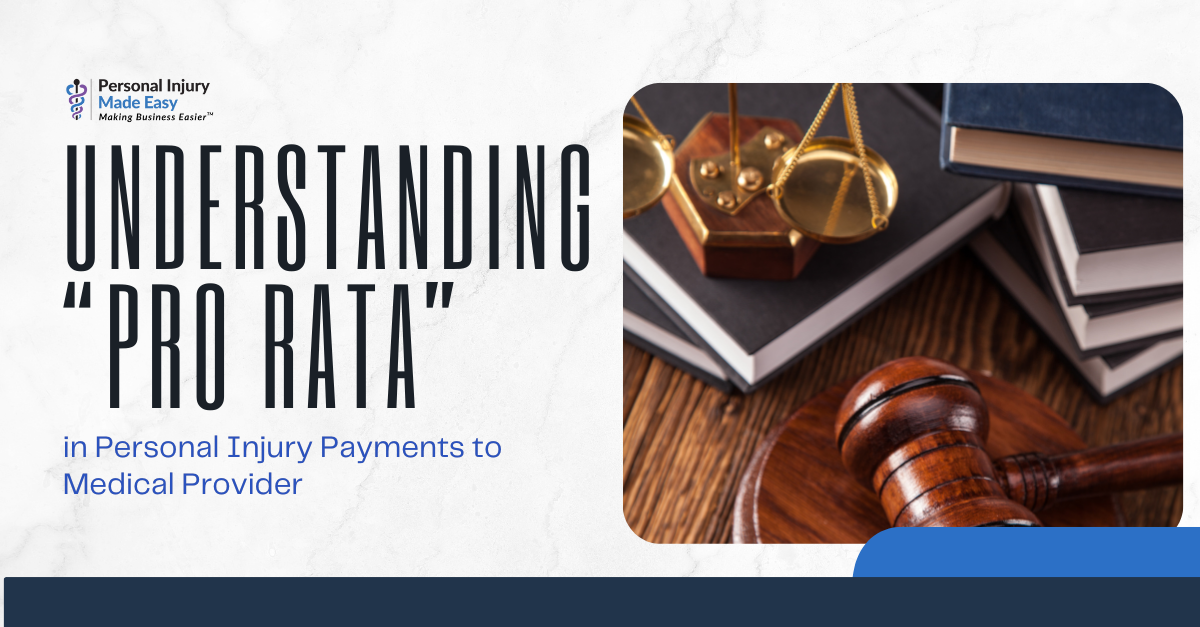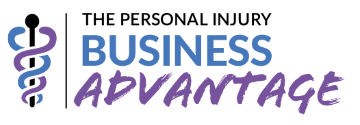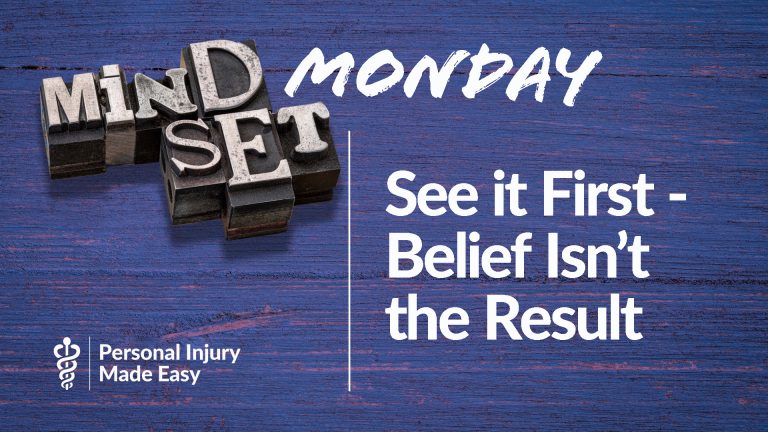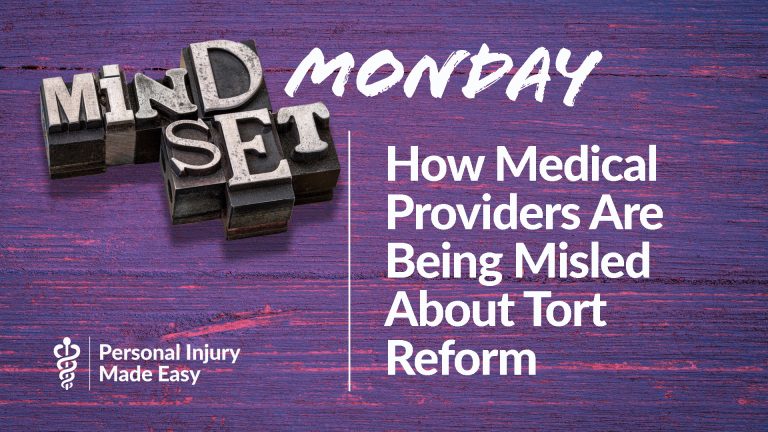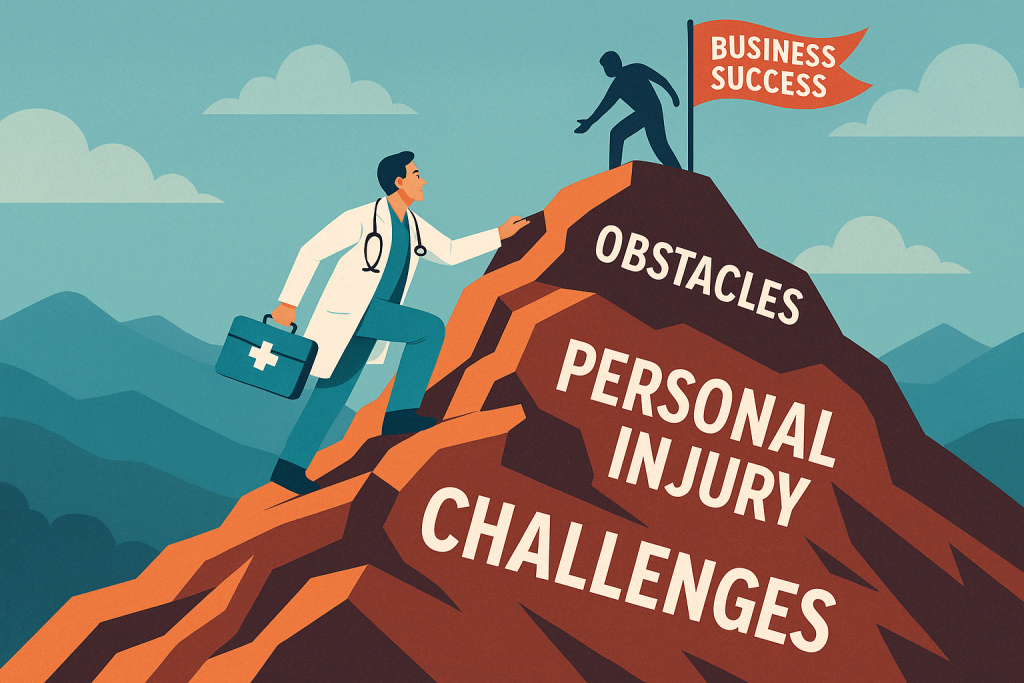
Win Big in PI, Even in States That Protect Patient Recoveries
Because being more difficult doesn’t mean less opportunity with PI
I want to speak directly to medical providers practicing in states where laws ensure the patient gets a portion of any settlement or favorable trial verdict. These are usually common fund and pro rata states—where settlements are split proportionally, and where many of you may have been told to think twice about personal injury (PI) patients.
Let’s clear the air and reshape that narrative.
The Situation in Most States: Patients Have No Priority Payout
The majority of states are like California and have no set-aside protection for patients when their PI cases settle or they win at trial. In those states, attorneys usually have, by law, first payment priority. Medical providers follow, with no restriction on settlement payout beyond “reasonable bills” for “medically necessary” treatment. The patient is last to receive a payout—if funds remain or if their attorney negotiates reductions to increase the client’s share. Here, the patient has no automatic entitlement to settlement proceeds. Legal and medical debts are superior to the patient’s right to be paid.
These superior payout rights stem from the common fund doctrine, meaning the reason there’s a fund to pay anyone is due to the efforts of the attorney who obtains, gathers, and manages it. So, attorneys get the first spot at the money trough. Medical providers also benefit from this doctrine, as treatment and expenses often play a critical role in determining damages. Trauma centers, such as hospital ERs, also usually have priority payment rights, though with limits on what they can recover due to the size of many emergency bills.
The law generally wants to encourage attorneys to take on these cases and for medical providers to treat injured individuals. In return, they usually receive payout priority. That’s the situation in most states.
In these states, the patient still owes the full bill regardless of case outcome.
Negotiating bill payments in these states is both art and science, based on law and facts. Unfortunately, many law firms mislead providers on legal rights, hide settlement amounts, inflate fees and costs, and use various tactics to pressure and even bully medical providers. That’s why mastering negotiation—or outsourcing it—is a critical business skill for the medical profession.
When done right, a PI segment in these states can still be the highest profit center of your practice.
The Situation in Some States: The Patient’s Share in Recoveries is Protected
Some states, like North Carolina, protect the patient’s share of the recovery. The attorney still receives first priority payout, but then a second portion is set aside for the patient. Medical providers are paid from a third tier, effectively making them last in line—reversing the national trend.
Payouts in these states are generally pro rata, meaning the amount paid to each provider is proportional to their bill. These payments are determined regardless of each provider’s margins or circumstances.
This is unfair for two major reasons:
2. Unequal business models. Equating a $2,200 MRI bill to a $2,200 chiropractic or physical therapy bill, and paying each, say, $550 (25%) of their billed amounts is absurd. The imaging center has high margins and low touchpoints, so still profits; the chiropractor or physical therapist, on the other hand, likely saw the patient 15+ times with significantly lower margins—so loses money. And that loss can be huge.
Fortunately, in these states, the patient still owes the balance of the bill not paid by the settlement.
That balance keeps pressure on both the patient and the attorney, who likely promised “no medical debt” to sign their client up. That promise becomes your leverage. And while negotiating here has more barriers, it’s still very doable—with the right strategies.
The Situation in Rare States: Patient’s Share Protected & Providers Cut Off
A few states—Missouri being one—go even further by legally waiving the patient’s remaining balance if there’s insufficient settlement recovery. This disincentivizes providers from treating PI patients at all.
Imagine: You treat on a lien, and the case under-settles. The law says you can’t collect the balance, even though you had no say in the settlement. That’s grossly unfair.
Yet, surprisingly, some providers I’ve coached in Missouri report that PI still pays better than any other segment. Likely, law firms in these states go beyond their obligations to keep good providers engaged—because without providers, they have no case. No treatment, no documentation, no damages.
How Medical Providers Can Be Protected and Thrive Regardless of Jurisdiction
Leverage over lawyers exists in every state. The key is knowing how to spot it, assert it, and use it.
Doing PI “right” in this unique practice niche is something you can learn—what to do, what not to do, the right way to position and protect your hard work, and how to do it all professionally and in a way that grows profits and where you can, relationships.
That’s why I wrote the book Personal Injury Made Easy: A Roadmap for Medical Providers to Successfully Navigate the High-Profit Highway, covering proven processes, profitable payments, and sustainable growth. Get it on Amazon—this is where you do it yourself.
That’s why I teach negotiation training—not just for doctors, but also for your staff who handle law firm calls. Negotiations Aikido is virtual, practical, and a powerful training, so you can do it yourself.
That’s why I coach medical providers through my Business Advantage Program, focusing on processes, profits, and growth. Coaching is where we do it together.
And finally, for those who want to hand off the burden entirely, my team offers outsourced PI negotiations—where I become your direct intermediary. It’s the ultimate advantage when it’s done for you.
Final Thoughts: Don’t Run Away—Run Toward PI
Yes, some states make it harder. Yet starting, building and expanding a PI segment should be a priority for most medical offices.
Why PI?
- Stronger patient treatment compliance
- No pre-authorization delays
- Ability to bill for services usually denied
- Full out-of-network billing
- Fast cash potential with MedPay and PIP (personal injury protection)
- Niche peer referral streams
- Gateway to new patients and new referrals
The journey may be stormy, but the rewards are real. And you’re not in it alone.
Keep learning. Keep applying. Keep improving.
Because progress is the real perfection. And for most any medical office, PI is the place to be.
Trust me. You’ll be glad you did. And so will your patients, your staff, and your future self.


